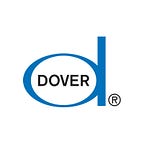Pyrography for everyone!
Artist Lora Irish uses creative leather burning techniques to make jewelry, bags, and accessories — and can teach you how in this exciting new book from Dover.
Lora Irish is a passionate teacher and i especially fond of her beginner students, many of whom are rural women who leave their muck boots outside the door of the classroom before settling down to create something. “I love to put a tool in your hand,” says Lora, “and show you how you can do this.” She believes that art is already in everyone’s nature and all a student needs is a little help and a little instruction. And pyrography fits the bill of a skill anyone can learn.
Pyrography means drawing with fire. For our purposes, it’s more like burning with heat and at a fairly low temperature — although obviously safety’s a concern. If you can burn a mark into a piece of leather, then you can burn a mark into your own hand.
You might be more familiar with wood burning than leather burning. People who do wood burning have tons of finished plaques, says Lora, flat pieces that can be displayed on a wall. But burned leather puts you into a three-dimensional process that’s akin to sculpture.
Leather burning also has a venerable history. “Think of a cowboy with time on his hands,” says Lora, “He’s got his saddle and some sharpened sticks that he heats up in the fire. That’s where we get those beautiful tooled saddles.”
It’s also cheap. A wood burning tool costs about $25 and a bag of leather scraps will run you from $10 to $40 dollars, depending on the weight and type of leather. Google “leather scraps for sale” to find retailers. Other tools, like a rotary wheel for cutting fabric and a thick cutting mat, might be things that you already have.
Lora’s work is often decorated with colored pencils. She suggests using artist quality pencils rather than cheaper brands. For the leather necklace pictured above, she started with the lightest colors, like white, and then added the next colors in several thin layers to build up depth. Lora uses an acrylic sealer on the finished project which protects both the added color and the leather’s original color.
Keep it simple, advises Lora, and don’t be afraid to make mistakes! That’s another reason for a minimal investment in scrap leather rather than paying top dollar for the best available product. If you mess up, so what? Get out another piece and try it again!
